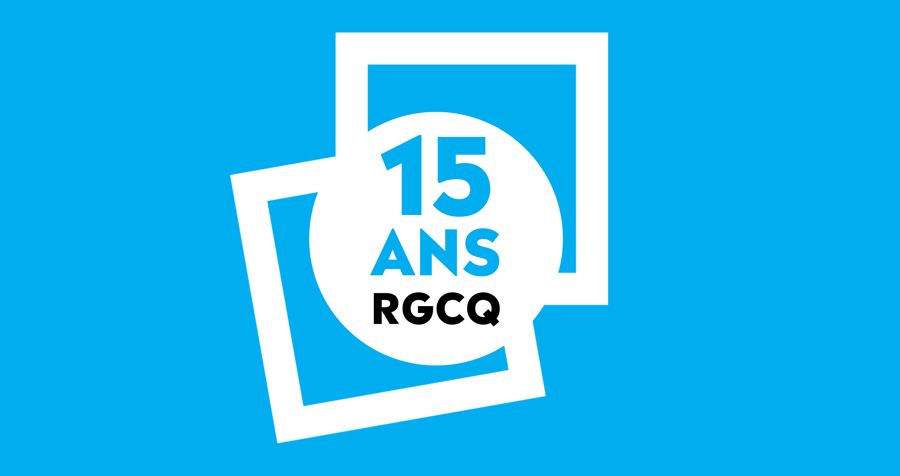RGCQ is in orbit
15 years after its creation

“THE RGCQ ROCKET WAS LAUNCHED IN 1999. IT IS NOW IN ORBIT,” SAYS ANDRÉ M. BENOÎT, WHO JOINED THIS GROUP A FEW MONTHS AFTER ITS CREATION. BY BRINGING TOGETHER THE LIVING FORCES OF QUEBEC CO-OWNERSHIP, NAMELY ITS MANAGERS AND CO-OWNERSHIP SYNDICATES, THE RGCQ HAS GIVEN BIRTH TO AN ORGANIZATION THAT IS NOW GOING STRONG.
Fifteen years ago, Quebec had 100,000 condos. Since then, that number has grown to around 400,000, proof that co-ownership has experienced a meteoric rise. The populations living on the condo planet are increasing at the speed of light. A true universe in itself, this housing method nevertheless includes gray areas that could be called “black holes,” which must be avoided at all costs. These celestial maelstroms, whose force of attraction is irresistible, suck their victims into a fatal gravity, engulf them and then pulverize them into a void whose finality is merciless.
LE RÉVEIL
“The laws governing this housing method have become too complex; the responsibilities of the unions and administrators too heavy with consequences,” announced the first issue of Condoliaison magazine published in the spring of 2000, to justify the creation of the RGCQ. It has stayed the course since its inception. The message is always the same, focused on the sound management of Quebec co-ownerships, with the difference that it has matured. In fact, most of the themes addressed by the RGCQ have evolved.
One of the most striking examples concerns the contingency fund. “Initially, we approached this subject from the point of view of interpreting the law. We insisted a lot on the words used and the intention of the legislator on this issue,” recalls André M. Benoît. Things go much further today, “because we have experience,” he observes.
In other words, the contingency fund is now based on concrete facts, because several Quebec co-ownerships have found themselves in difficulty over the past 15 years, due to insufficient funds to carry out major repairs to be made in a building, or to replace common areas that had reached maturity.
Which led the Secretary General of the RGCQ, Yves Joli-Coeur, to launch a heartfelt appeal to Quebec co-owners in the 2000s, by means of two books: Le fonds de prévoyance: Gage de réussite en copropriété and Copropriétés en difficulté Constats et solutions France/Québec. These works reflected the culmination of in-depth reflection on co-ownership, and are still intended to be invaluable “survival guides” for condo owners, as well as for co-ownership managers and other stakeholders involved in the co-ownership sector.
---------------------------------------
The RGCQ was founded by distinguished lawyer Yves Joli-Coeur, as well as by Pierre César, Jean Caron, Richard Presseault, Jan Towarnicki and Raymond Ouimet. The latter was its first president. André Delage succeeded him.
---------------------------------------
HOMME BEGINNINGS
To be honest, the RGCQ started out humbly, supported by builders such as Yves Joli-Coeur, Richard Presseault, Pierre César, Jan Towarnicki and Raymond Ouimet. This group has grown from a minimalist entity to a structured organization.
Despite its modest means at the start, the RGCQ was quick to make its presence felt. Elected officials got a good idea three years after its creation, in 1999, when it succeeded in having Article 1069 of the Civil Code of Québec amended. The latter now requires any new purchaser of a co-ownership apartment to pay, at the time of purchase, the outstanding common charges (condo fees) of the said apartment, which was not the case before.
The RGCQ’s crusade has taken other forms, for example an uncompromising commitment to professionalize the profession of co-ownership manager. The Ordre des administrateurs agréés du Québec (Ordre des ADMA) has been working on this for several years now, and made a recommendation in a brief it produced in 2012. This was submitted to the Advisory Committee on Co-ownerships, of which Yves Joli-Coeur was one of the seven members.
This committee was created in the same year, after the establishment of the Co-ownership Working Group, which, a year earlier, had also written a report commissioned by the Quebec Ministry of Justice. It contains the main dysfunctions specific to Quebec co-ownership, as well as possible solutions to correct them, including an improvement of the legislative framework that governs it.
THE RGCQ WAS HEARD
A signatory of a brief submitted to the Quebec Ministry of Justice in 2012, the RGCQ also lists the main problems encountered in co-ownership. Moreover, several of the statements it contains inspired the Working Group.
Among other recommendations in its report, the RGCQ proposes a
“simplification” and “clarification” of the mandatory guarantee plans for new residential buildings. In this regard, the announcement of February 28 by the former Minister of Employment and Social Solidarity, Agnès Maltais, will have something to delight consumers. As of January 1, 2015, the new formula will provide for the creation of a single guarantee plan administrator.
Its board of directors would have only 3 seats out of 13 occupied by associations of entrepreneurs, but above all, 3 others in which representatives of consumer associations would take place. It should be remembered that the mandatory guarantee plans provide a certain protection to buyers, in the event that the residence they acquire, in this case a condo within a co-ownership, presents problems related to its construction.
In short, the RGCQ has transcended time and today represents a solid organization with 1,000 members, representing approximately 35,000 co-ownership units. In addition to the RGCQ-Provincial, this organization has two chapters in Quebec City and Gatineau (Outaouais). Looking to the future and the many challenges that await it, this non-profit organization (NPO) is definitely here to stay.
Login to view this content
Become a member
Access all our services and a vast network of experts by becoming a member of the RGCQ.